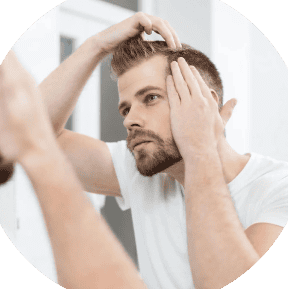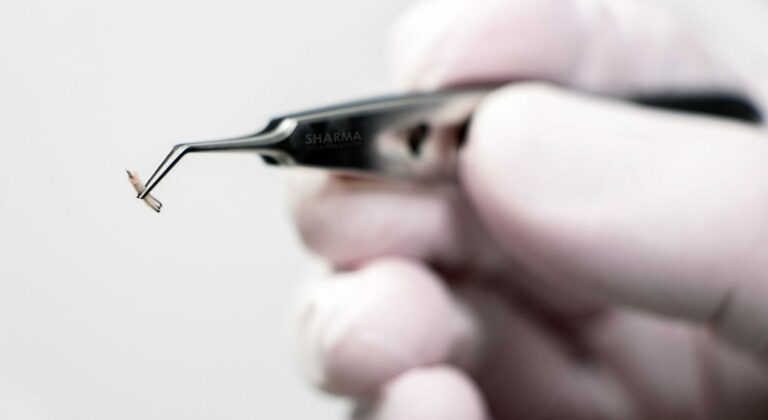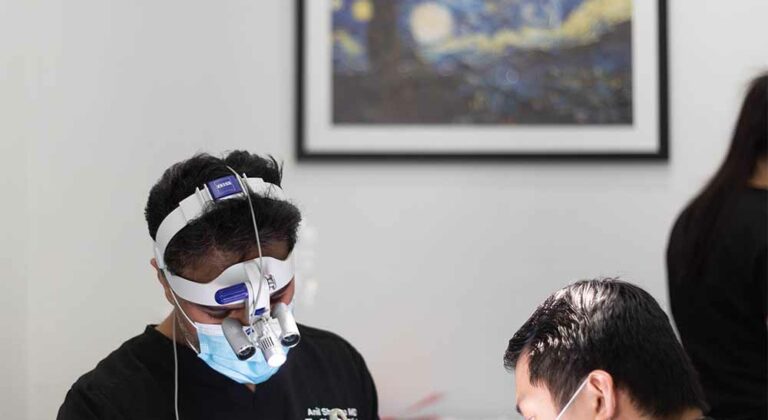Hair transplants are a significant investment, and proper post-operative care is crucial for successful results. One common question among patients is when they can resume their normal activities, such as swimming or sauna use.
This article provides clear guidelines on when it’s safe to return to swimming and sauna use following a hair transplant. We’ll discuss the factors that influence healing time, potential risks, and best practices to ensure your transplanted hair thrives. By following these recommendations, you can minimize complications and maximize the longevity of your hair restoration results.
Why is swimming a concern after a hair transplant?
Swimming can pose significant risks to a newly transplanted scalp. Pool environments, often filled with chlorine and other chemicals, can irritate the delicate grafts and impede healing. Wild swimming comes with its own set of risks, while the physical act of swimming itself can disrupt the healing process and increase the risk of infection.
Here’s a closer look at some of the factors crucial to consider when swimming with newly transplanted hair:
Chlorinated pools
Chlorine is a powerful chemical that is used in pools to disinfect the water and kill harmful bacteria and viruses. However, the chemical can interfere with the survival of transplanted hair follicles, as it can disrupt the delicate balance of nutrients and oxygen needed for the grafts to establish and grow.
Exposure to chlorine can strip the scalp of its natural oils, leading to dryness, flaking, and itching. This can create an environment that is less conducive to healing and can potentially irritate the transplanted follicles. In extreme cases, chlorine can even cause chemical burns on the delicate scalp, especially when exposed to open wounds or grafts. These burns can be painful, delay healing, and even increase the risk of infection.
Freshwater
Freshwater bodies, such as lakes, rivers, and ponds, can pose significant risks to healing hair transplant grafts. The presence of harmful pathogens like bacteria, viruses, and parasites, as well as environmental pollutants, can increase the likelihood of infection. Additionally, extreme temperatures and chemical contamination can further irritate the scalp and hinder the growth of new hair follicles.
Saltwater
The high salt concentration in saltwater can draw moisture from the scalp, leading to dehydration and hindering the healing process. This can compromise the survival of transplanted follicles.
Meanwhile, saltwater can disrupt new follicles by sodium toxicity, pH imbalance, and mechanical irritation. It is important to avoid saltwater exposure for a few weeks after a hair transplant to minimize the risk of complications.
Recommended waiting period
To ensure optimal hair transplant results, it’s generally recommended to wait 4-6 weeks before swimming. This allows the transplanted grafts to stabilize, the scalp to heal, and the risk of infection to diminish.
However, it’s important to remember that individual recovery times vary. Always consult with your surgeon for specific guidance on your hair transplant recovery.
Practical tips for swimming post-transplant
Once it is safe for you to swim, there are some measures you can take to further reduce the risk of infection after your hair transplant:
- Wear a protective swim cap: This helps shield your scalp from chlorine and other contaminants in the pool water.
- Rinse thoroughly with fresh water: After swimming, thoroughly rinse your scalp with fresh water to remove any chlorine, salt, or other contaminants that may be lingering on your hair and scalp. This will help prevent further irritation and potential damage to the grafts.
- Use sulfate-free shampoo: Sulfates can be harsh on the scalp and can strip away natural oils, which can lead to dryness and irritation. Opt for a shampoo that is specifically formulated for sensitive skin or post-surgical care.
- Avoid crowded pools: Pools with high levels of bacteria and chlorine can increase the risk of infection. Opt for less crowded pools or bodies of natural water with cleaner conditions.
- Avoid excessive sun exposure: If you’re swimming outdoors, protect your scalp from excessive sun exposure, as this can lead to dryness and irritation, making it more susceptible to infection.
Is it safe to use a sauna after a hair transplant?
Saunas can pose risks to hair transplant recovery due to the high temperatures involved. Excessive sweating can irritate the scalp and transplanted grafts, potentially leading to inflammation or complications.
We generally recommend waiting at least 4 weeks post-operation before using a sauna. However, individual healing times vary. Always consult with your surgeon for specific guidance on when it’s safe to resume sauna use.
When your surgeon gives you the all-clear to start using a sauna, begin with shorter, less intense sessions and keep your scalp away from direct heat. Always keep an eye out for any irritation or discomfort indicators on your scalp, such as redness, swelling, or itching. Should you have any negative effects, stop using the sauna immediately and contact your surgeon.
By following these guidelines, you can help minimize the risks associated with sauna use after a hair transplant and promote a successful recovery.
BOOK NOW
Talk to a Hair Transplant Expert
Are you looking for the most effective treatment plan to reverse the effects of hair loss? Dr. Sharma has a long-lasting commitment to offering the best services in the industry. Not only is he experienced with hair loss treatment, but he is passionate about helping each patient receive excellent results.

Share this:
Medically reviewed by
Updated on
Have a question?
Find out how we can help you look feel your absolute best
Contact us 780-476-7970


